Wednesday, October 26, 2022
The Bank of Canada today raised its key policy rate to 3.75% with a 50-basis-point hike. The Prime Rate will increase from 5.45% to 5.95%.
The Bank is continuing its policy of quantitative tightening and this move marks the central bank’s sixth rate hike this year.
Inflation around the world remains high and broadly based. This reflects the strength of the global recovery from the pandemic, a series of global supply disruptions, and elevated commodity prices, particularly for energy, which have been pushed up by Russia’s attack on Ukraine.
The strength of the US dollar is adding to inflationary pressures in many countries. Tighter monetary policies aimed at controlling inflation are weighing on economic activity around the world. As economies slow and supply disruptions ease, global inflation is expected to come down.
HOW IS THE PRIME RATE SET IN CANADA?
Each bank sets its own prime rate, but the Big Five Banks usually all have the same prime rate.
The prime rate is primarily influenced by the policy interest rate set by the Bank of Canada (BoC), also known as the BoC’s target for the overnight rate. When the BoC raises the overnight rate, it becomes more expensive for banks to borrow money, and they raise their respective prime rates to cover the added costs.
Conversely when the Bank of Canada lowers the overnight rate, banks usually lower their prime rates by the same amount.
why is the rate being raised?
In Canada, the economy continues to operate in excess demand and labour markets remain tight. The demand for goods and services is still running ahead of the economy’s ability to supply them, putting upward pressure on domestic inflation. Businesses continue to report widespread labour shortages and, with the full reopening of the economy, strong demand has led to a sharp rise in the price of services.
HOW DOES THIS EFFECT THE HOUSING MARKET?
The effects of recent policy rate increases by the Bank are becoming evident in interest-sensitive areas of the economy: housing activity has retreated sharply, and spending by households and businesses is softening.
Because the prime rate is the base cost of borrowing from a bank, it can also affect your mortgage rates.
If you have a variable rate mortgage with static payments, a higher share of your mortgage payment will go toward interest and a smaller percentage will go toward the principal. If you have a variable rate mortgage where the payment adjusts when interest rates change, you will immediately face a higher monthly mortgage payment. When the prime rate in Canada goes up or down, your mortgage rate will go up or down by the same amount.
If you have a fixed rate mortgage, where the interest rate remains the same for the length of the mortgage contract, your monthly payments will remain the same for the duration of the loan. When it is time to renew your loan, the interest rate on the mortgage may be higher and you may pay more to borrow. With a fixed-rate mortgage, your rate will not change over its term even if the prime rate changes.
HOW DID WE GET HERE?
March 27, 2020: The Prime Rate is 2.45%. The Bank of Canada lowered its key interest rate to 0.25 per cent, a record low, and launched a quantitative easing program (or government bond-buying program) to further stimulate the economy as COVID-19 continued to spread around the world.
Oct. 27, 2021: The Prime Rate is 2.45%. With the economy showing signs of new life and COVID-19 restrictions lifting, the Bank of Canada announced it was ending its quantitative easing program.
March 2, 2022: The Prime Rate is 2.70%. After keeping its key interest rate at 0.25 per cent for two years, the Bank of Canada raised it to 0.50 per cent. This came amid stubbornly high inflation and an increasingly volatile global economic landscape driven by Russia’s invasion of Ukraine.
April 13, 2022: The Prime Rate is 3.20%. The Bank of Canada further hiked its key interest rate by half a percentage point to one per cent. The last time the central bank raised the overnight target rate by half a percentage point rather than a quarter was in May 2000.
June 1, 2022: The Prime Rate is 3.70%. At the start of this summer, The Bank of Canada raised its key interest rate by another half of a percentage point to 1.5 per cent — the fastest year-over-year rise in more than three decades, to rein in a higher than expected inflation rate of 6.8 per cent.
July 13, 2022: The Prime Rate is 4.70%. As projected, another hike came later in the summer as the Bank of Canada raised its key interest rate by a full percentage point, marking the largest single rate hike since August 1998.
Sept. 7, 2022: The Prime Rate is 5.45%. For the fifth consecutive hike this year, the Bank of Canada rose its key interest rate to 0.75 per cent, to a total of 3.25 per cent — the highest key rate since May 2008. After the hike, in an Oct. 6 speech, Bank of Canada governor Tiff Macklem said there is more to be done.
READ THE FULL PRESS RELEASE
Read the full Bank of Canada press release here.
READ THE FULL MONETARY POLICY REPORT
While inflation has come off its peak, it remains too high. As the economy responds to higher interest rates and as the effects of elevated commodity prices and supply disruptions fade, the Bank expects inflation to fall to about 3% in late 2023, then return to 2% in 2024.
Read the Bank of Canada’s quarterly Monetary Policy Report (MPR)
WHEN ARE THE NEXT ANNOUNCEMENTS EXPECTED?
The announcements scheduled for 2022 / 2023 are as follows:
- December 7, 2022
- January 25, 2023
- March 8, 2023
- April 12, 2023
- June 7, 2023
- July 12, 2023
- October 25, 2023
- December 6, 2023
